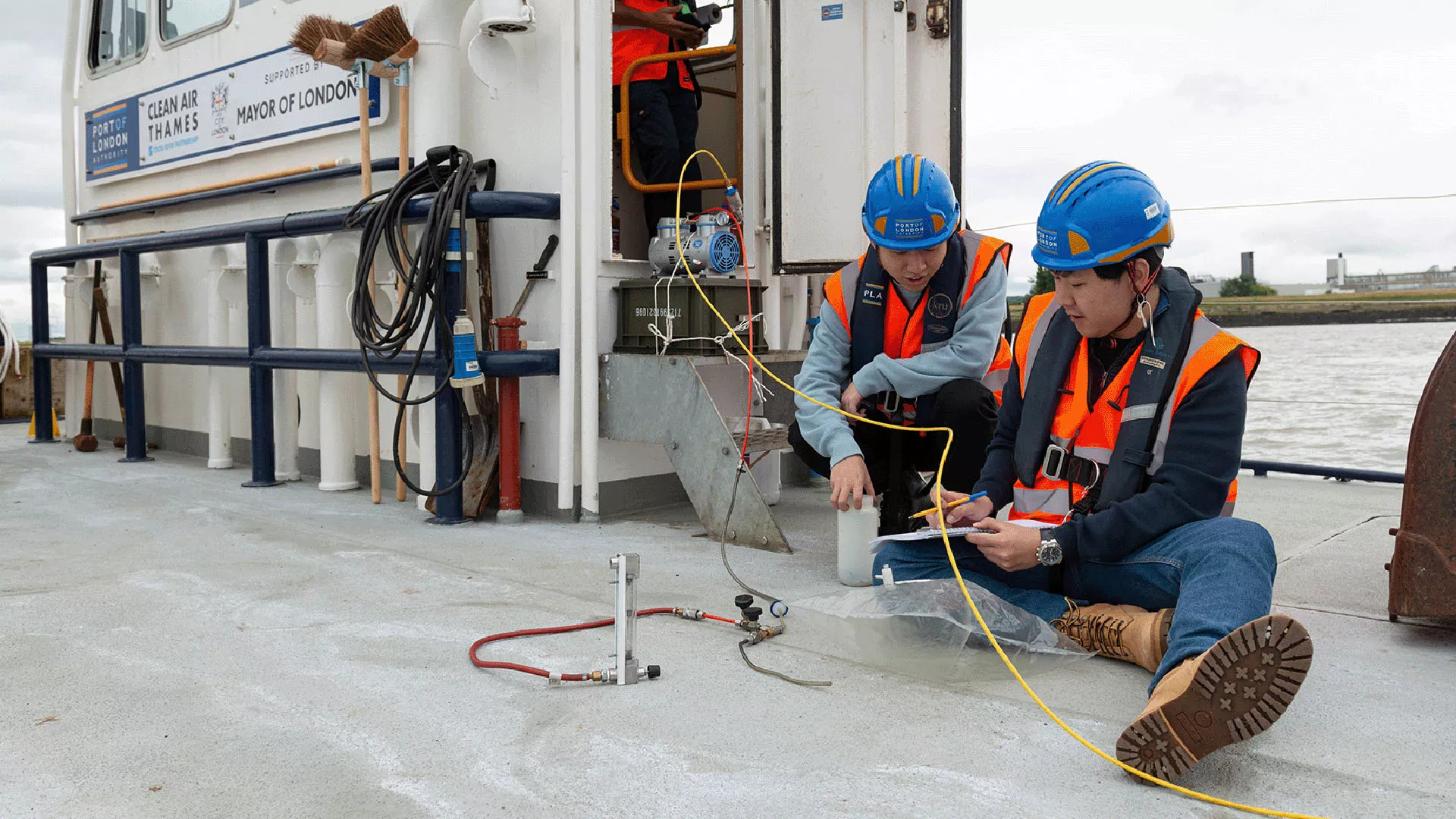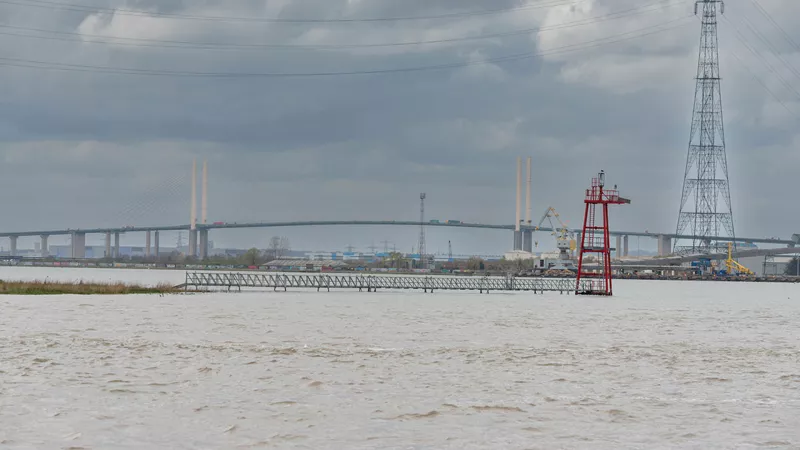Live Tides
NOTICES TO MARINERS
Charts & Surveys

Incident reporting
Life-threatening emergencies on the river:
Call 999 and ask for the Coastguard
For near miss, safety observations and incident reporting click below
Air quality tests underway after vessel’s green refit

Tests have started to assess the effectiveness of equipment installed to cut air pollution emitted from Port of London Authority (PLA) vessel, Driftwood II.
Last month, students from University College London (UCL) visited the PLA’s marine operations hub in Denton, Gravesend, to monitor nitrogen oxide (NOx) levels from the vessel’s exhaust, following the fitting of selective catalytic reduction technology to her two propulsion engines and generator.
The gases collected by mechanical engineering PhD students, Sheng-Wei Wang and Chengfan Tang, will be now analysed in UCL’s laboratory, to measure the concentration of NOx and other air pollutants. The results will be compared with similar undertaken before the refit.
The vessel’s green upgrade has been co-financed by the Cross River Partnership, as part of Clean Air Thames supported by the Mayor’s Air Quality Fund and the City of London Corporation.
Dr Veronica Chan, the air quality lead in the PLA’s environment team, said: “The results of these tests will be an important guide to how our fleet and other vessels can contribute to reducing air pollution all along the tidal Thames.”
Limited space on board Driftwood II required a complete overhaul of the engine room. This included converting an unutilised chemical tank to a fuel tank.
Driftwood II is used to clear river debris and maintain moorings.
Related content


Location: London/Gravesend Remuneration: £28,971 per annum for a commitment of up to 24 days per...

Discover


